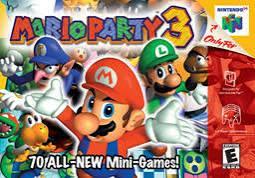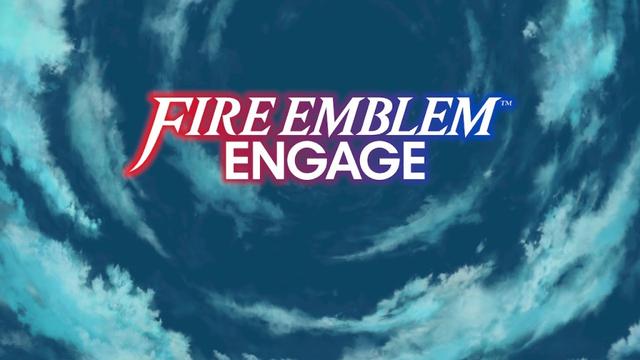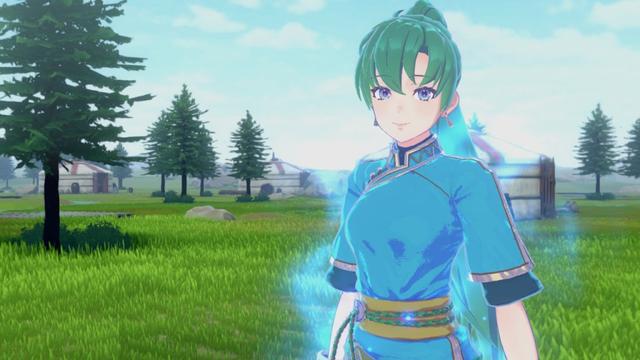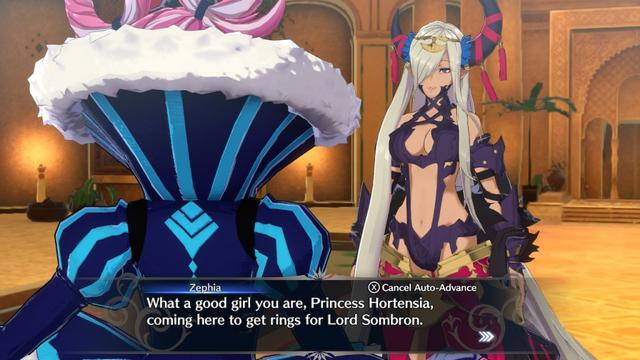Review – Fire Emblem Engage
Reviewed on: Nintendo Switch
Developed by: Nintendo
Published by: Nintendo
Release Date: 20 January 2023
Fire Emblem is arguably one of Nintendo’s “greats”. It’s a series that debuted on the Japanese Famicom in 1990, but unfortunately nearly met its end prior to the 2012 release of Fire Emblem: Awakening. The series wasn’t selling well, and Awakening was the “Make or break” game for the continuation of Nintendo’s fantasy strategy RPG. Thankfully, it went on to sell over two-million units, making it the best selling entry in the west at the time of release. Since then, the series has continued to see success with DLC, further games and even spin-off titles. Most recently, Fire Emblem Engage was released in 2023 – But does it live up to the hype?
For those unfamiliar with Fire Emblem, the game places you on various maps throughout chapters where you will take turns against the opponent to traverse the map, keeping your units safe while obliterating the enemy. You begin with a humble army that slowly grows as you progress through the story, with a wide range of classes that have their own advantages and disadvantages. As you beat enemies, units will earn experience points, levelling them up and ultimately making them stronger. Fire Emblem Engage takes all of the key elements of the series and improves on almost every aspect.
Fire Emblem Engage opens with an exciting cutscene, thrusting the main character into an endgame scenario that you hope sets a precedent for the narrative of the rest of the game. Disappointingly so, this is also where it peaks. The main narrative is boring and predictable, with occasionally better moments as you sit through the mind-numbing cutscenes, with a slightly smug “I KNEW IT” voice running through your inner monologue. Of course, being predictable as it is, it’s not as though you’ve worked out Bruce Willis was a ghost all along in The Sixth Sense.
Fire Emblem Engage runs with the typical anime trope of the main character being “The Chosen One”. You are The Devine Dragon, a being worshipped but gravely injured in battle, forcing you into a one-thousand-year slumber. When you awaken, it’s evident trouble is on the horizon and The Devine Dragon must set out on a journey to collect all of The Emblem Rings to ensure peace and safety for the continent of Elyos.
The narrative isn’t helped by wooden animations throughout cutscenes and voice acting which leaves a lot to be desired. It does a job to drive a purpose for the gameplay to progress and to give you an end-goal for what you are fighting for. It also drives certain plot points which aid in the difficulty and reasoning behind certain obstacles thrown your way during the battles. If you’re desperate to just play the game and shave off a few hours of time, you’re not going to miss much by skipping every available cutscene. It can be beneficial when trying to immerse yourself in the gameplay to learn the characters and their personalities, especially those playing on “Classic” where the units will permanently die. It offers some meaning and sometimes sadness when those units perish due to your irresponsible choices, or desperate sacrifices.
Thankfully, Fire Emblem isn’t a series that needs a good narrative to be a good game. It has often been complimented by a fantastic narrative in the past, but the gameplay is where Engage really shines. To start with, Fire Emblem: Engage offers a variety of difficulty options, opening the series up to newcomers but also providing a deeply challenging experience for hardcore fans. Engage offers the standard “Normal”, “Hard” and “Merciless” options for gamers, but also allows you to customise it further by choosing a “Classic” run or a “Casual” run. Classic mode features perma-death, whereas Casual mode means that downed units will leave the field of battle, but will be available for re-selection in the next chapter. Having such customisable options in a game like Fire Emblem, effectively allowing for six layers of difficulty is an incredible decision by Nintendo.
Fire Emblem: Engage features an item known as the Draconic Time Crystal, which allows the player the ability to turn back time in the midst of battle should things go awry, or if they make silly mistakes they wish to undo. In Normal difficulty, it has unlimited uses, yet in the higher difficulty it has a limit of ten per battle. Initially this felt like I was losing a part of Fire Emblem. For me, Fire Emblem is all about making decisions and living with my mistakes, meaning losing units. The ability to rewind time felt like it could be making things too easy and I was never going to lose anybody. I was proven wrong multiple times throughout my playthrough. Reaching the end of a battle, ready to make the final move on the enemy, only to find I have left a single unit vulnerable to a fatal blow with no amount of movement possible to fix this costly error, without going too far back to make it worthwhile. Sometimes, I just had to live with my bad decisions and lose a unit. Other times, I had already used all ten rewinds. Later in the game this made me even more cautious and improved my strategy, making me feel like I was naturally getting better at Fire Emblem while still having the safety net of the crystal, but also the sinking feeling of the ability to lose my units at any moment.
Combat is where Fire Emblem shines of course, and it’s better than it ever has been. Engage introduces a new mechanic, allowing you to summon “Emblems”, characters from past games who provide additional support and abilities to your units. They appear in astral forms and are summoned from sacred rings known as “Emblem Rings”, which can be assigned to one unit at a time. It’s a great throwback to older titles with subtle references for seasoned Fire Emblem players.
The “Weapon” triangle returns to Engage with some tweaks. Swords are strong against Axes, Axes against Spears and Spears against Swords. Previously the advantage was a statistical boost to the user with the benefit, however Engage introduces a new element with the ability to “Break” an opponent. If you use a Sword on an Axe-wielder, they will “break” and be unable to hit back in the same turn, leaving them wide open to further attacks from units. Conversely, this can come back to bite you on the enemy’s turn. It’s always been a case of “Avoid it if you can” when placing your units in Fire Emblem and trying not to reach a disadvantage, but the steaks are much higher thanks to the ability to break or be broken, lending to an overall better strategical experience in Fire Emblem, and a mechanic I hope remains in the long run.
When not in battle or forcing yourself through the aforementioned wooden cutscenes, you can visit The Somniel. A safe-space for all of your units to gather and a central hub for things like training, shopping and other activities to break away from the hustle and bustle of battles. As you progress, The Somniel slowly introduces more activities such as cooking and provides more shopping experiences. Aspects like cooking are useful to give small, but sometimes essential stat boosts for the upcoming chapter, but interacting and exploring The Somniel slowly becomes a chore. Initially, I enjoyed searching around and felt like it was a welcome break from going chapter-to-chapter, but eventually it felt like work. I just wanted to get going into the next chapter and continue the campaign.
Fire Emblem’s transition into 3D adopted an anime-esque art direction, with a cell-shaded style which compliments it well. At first, this looked okay on the Nintendo 3DS and the limitation on the hardware was acceptable. Now, it looks vibrant on the Nintendo Switch, more so on the OLED models. This is one area that has been built upon, improved and is nearing perfection within the series, with a clear identification to stand tall amongst Nintendo’s usual mascots.
The animations in battle feel good. When landing a critical hit on an enemy, the animation changes somewhat to show an epic blow. Special attacks can be launched when Engaged with an Emblem and these are visually stunning set pieces which feel criminal to skip.
Performance-wise, the game runs smooth for the majority of the time. Some maps begin to chug, especially when there are effects on the field such as fire pits. For a turn-based strategy game, this isn’t a deal-breaker, but a frustration with the age of the Nintendo Switch. It feels like most Nintendo titles are going to chug somewhere at some point and has sadly become a bit of a norm surrounding their later titles. In terms of the soundtrack, there isn’t much to write home about. It’s a typical Fire Emblem title with background music that just feels like it exists. It doesn’t inspire me, nor does it feel damaging to the ears. It’s just there, but unfortunately never drowns out the awful voice acting.
Despite its flaws with the underwhelming narrative, it’s hard not to love Fire Emblem Engage. It ticks every box for me in what I want in a tactical RPG, it’s engaging (excuse the pun), every move matters and mistakes can be absolutely devastating. For those unsure, or looking for their first entry to the series, this is a fantastic starting point due to the variety of difficulty options available. With some of the best maps in the series, best mechanics and fantastically animated battles, Fire Emblem burns bright in my memories.
4 out of 5 – Great
⭐⭐⭐⭐
Rating: 4 out of 5.
#FireEmblem #FireEmblemEngage #Gaming #Nintendo #NintendoSwitch #rpg #SRPG #strategy #tactical #TRPG #turnBased #videoGames





